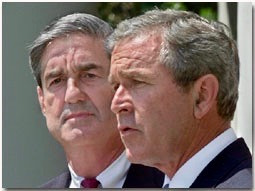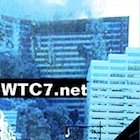Environmental anomalies at the World Trade Center: evidence for energetic materials
by Kevin R. Ryan, James R. Gourley, and Steven E. Jones
© The Author(s) 2008
Received: 17 February 2008 Accepted: 14 July 2008 Published online: 4 August 2008
Abstract Investigators monitoring air quality at the World Trade Center, after the September 11th attacks, found extremely high levels of volatile organic chemicals as well as unusual species that had never been seen before in structure fires. Data collected by the U.S. Environmental Protection Agency indicate striking spikes in levels of benzene, styrene, and several other products of combustion. These spikes occurred on specific dates in October and November 2001, and February 2002. Additionally, data collected by researchers at the University of California Davis showed similar spikes in the levels of sulfur and silicon compounds, and certain metals, in aerosols. To better explain these data, as well as the unusual detection of 1,3-diphenylpropane, the presence of energetic nanocomposites in the pile at Ground Zero is hypothesized.
1 Introduction
For months after the destruction at the World Trade Center (WTC) on 11th September, 2001, the fires at Ground Zero (GZ) could not be put out, despite the following facts.
- Several inches of dust covered the entire area after the destruction of the WTC buildings.
- Millions of gallons of water were sprayed onto the debris pile.
- Several rainfall events occurred at GZ, some heavy; and
- A chemical fire suppressant called Pyrocool was pumped into the piles (Lipton and Revkin 2001).
The characteristics of these un-extinguishable fires have not been adequately explained as the results of a normal structure fire, even one accelerated by jet fuel. Conversely, such fires are better explained given the presence of chemical energetic materials, which provide their own fuel and oxidant and are not deterred by water, dust, or chemical suppressants.
Apart from the extensive but failed efforts to extinguish the fires, there are several other physical indicators of the presence of energetic chemical reactions in the rubble at GZ. These include the following.
- Photographs and witness testimony evidencing molten metal and explosions accompanied by white dust clouds (Jones 2006; Meyerowitz 2006; PBS 2002).
- Extremely high temperatures in the fires at the WTC (Jones et al. 2008a).
- Unusual spikes in volatile organic chemical (VOC) emissions, suggesting abrupt, violent fires on specific dates.
- Unusual species in the environmental monitoring data, also corresponding to specific dates.
Explosions followed by white dust clouds, and molten metal at GZ, are of particular interest in this analysis. A white dust cloud is one of the products of the thermite reaction. The white dust in this case is aluminum oxide, released from the extremely exothermic reaction between
aluminum and iron oxide. The other product of the thermite reaction is molten iron. These facts, coupled with evidence for extremely high temperatures at the WTC, suggest that investigators should examine the potential for such pyrotechnic materials at the WTC. The environmental data described below give more compelling evidence to support such an inquiry.
2 EPA data on VOC emissions from GZ
Through a Freedom of Information Act (FOIA) request, access to environmental monitoring data from the U.S. Environmental Protection Agency’s (EPA) WTC response was obtained (EPA 2004). The data set shows that spikes in the levels of airborne VOCs occurred on specific dates at GZ (Austin Tobin Plaza, WTC 1 or WTC 2), with levels of the related contaminants rising sharply and then falling dramatically back to baseline levels, usually within 1 day or less. An example is shown in Fig. 1, for detections of benzene.
Benzene is a major product of the combustion of plastics and other organic materials. In a typical structure fire, when plastics are abundant, benzene levels have been seen at levels as high as 26 ppb (MOEE 1997). Apart from fires, benzene is seen in high-traffic areas of urban settings, with mean levels of *4 ppb (Crebellia et al. 2001).
Serious health consequences are known to occur when breathing benzene at 100 ppb, and it is known to cause diseases such as leukemia (HHS 2007). Note that, for the first few weeks after 9/11, the levels of benzene detected at GZ were relatively low, although perhaps higher than historical levels from structure fires. But the maximum value detected in November 2001 was 180,000 ppb, and the average daily detection for October and November 2001 was 18,000 ppb. The five peaks in benzene detection occurred on 5th October, 11th October, 3rd November, 8th November, and 16th November.
Similarly, the data for styrene are presented in Fig. 2.


The spikes in detected levels of styrene are more prominent. Styrene is normally seen as a product of the combustion of plastics, notably polystyrene. Interestingly, the dates of the five highest levels of styrene detection occurred on the same dates as those of highest detection of benzene.
A similar pattern in detection was noted in the data for several other analytes monitored by EPA in the air above the rubble piles at GZ. For example, toluene, ethylbenzene, and propylene follow the same pattern of spiked detection levels as seen above. These FOIA-obtained data indicate that all five of these VOCs were detected far above the levels published by EPA in their reports for the general public (Fig. 3, EPA 2002).
The occurrence of such extreme, sharp spikes in VOCs in air at GZ indicate something other than the behavior of a typical structure fire. Oxygen influx as a result of shifting of materials within the pile might have created an increase in combustion of material in localized areas. But these spikes in VOCs, at levels thousands of times higher than seen in other structure fires, suggest extremely violent but short-lived fire events.
Probably the most striking spike in toxic air emissions, found in EPA monitoring data, occurred on 9th February, 2002. Note (Table 1) that this was nearly 5 months after 9/11, and after nearly all the debris had been cleared from GZ. In fact, the levels of some species, like toluene and styrene, were some of the highest observed at the site. But the levels of benzene and propylene detected on that day were far above previous measurements, at 610,000 and
990,000 ppb, respectively. Other VOCs were measured at their peak levels on this date, including 1,3-butadiene at 400,000 ppb.


Article continues in PDF form here.


























